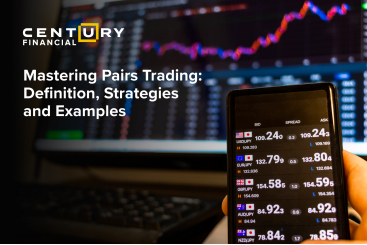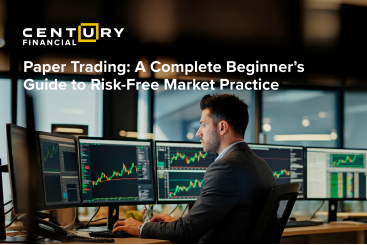Friday, July 01, 2022
Is 60/40 portfolio relevant amid inflation and interest rate hikes?
تم إعداد هذا المنشور من قبل سنشري للاستشارات


A major pie of financial planners designed 60/40 portfolios for their clients, for years now. The 60/40 portfolio comprises 60% equities and 40% bonds or other fixed-income offerings.
Historically, stock and bond prices move inversely, providing a cushion to investors amid market volatility.
However, 2022 has been a different case, so far, with volatility in both markets, and is anticipated to be a worse case than 2008 for 60/40 fans.
Both Stocks and Bonds on the downside
The S&P 500 — a benchmark for the U.S. equities — is down 20.4% on a year-to-date basis, as of US markets close on Jun 29, 2022. At the same time, iShares 20+ Year Treasury Bond ETF — a proxy for the bond market — is down 21.1%.
The first half of 2022 was tumultuous for global markets, dominated by recession fears arising due to aggressive interest rate hike scenario to combat rising inflation.
The S&P 500 is in a bear market territory, marking the worst first-half since 1970. This highlights the prevailing risk-off investor sentiments due to panic selling on recession fears.
Falling bond market adds to the woes for individuals invested in 60/40 portfolio. Typically, bond prices fall when interest rates rise. Prices of bonds issued today could fall tomorrow as tomorrow’s lenders could better bargain for more favourable terms than they could presently.
Further, soaring price levels reduces the purchasing power of coupons and principal payments as they would buy less than the scenario without inflation.
Taking a Flashback
GThe current backdrop of positive stock-bond correlation does not serve well for balanced strategies, including the traditional 60/40 stock-bond portfolio.
As of Jun 28, 2022, the 60/40 portfolio returned -15.8% year-to-date, according to data from PortfoliosLab.
The table below depicts the worst returns of 60/40 portfolio, as per the data sourced from NYU:
Worst Returns for 60/40 portfolio (in descending order)
| Year | 60/40 Portfolio Return | Reason | ||
| 1931 | -27.3% | Great Depression | ||
| 1937 | -20.7% | Recession | ||
| 1974 | -14.7% | Collapse of the Bretton Woods system & oil crisis | ||
| 2008 | -13.9% | Great Financial Crisis | ||
| 1930 | -13.3% | Great Depression | ||
| 1941 | -8.5% | WWII | ||
| 2002 | -7.1% | Dot-Com Bubble Crash | ||
| 1973 | -7.1% | Collapse of the Bretton Woods system & oil crisis | ||
| 1969 | -6.9% | Vietnam War led Crisis | ||
| 2001 | -4.9% | Dot-Com Bubble Crash | ||
|
||||
If the year would have marked an end now, 2022 would be placed in the table above 2008.
Having said that, it is important to note that amid low interest rates and low inflation environment, the 60/40 portfolio has yielded superior returns, as the conditions were conducive for both equities and bonds to thrive.
Nevertheless, the worse than 2008 case with the Great Depression scenario is raising two big questions:
What does the second half of 2022 look like for 60/40 investors?
High volatility and recession risks might define the second half of 2022. Hence, rebalancing the portfolio gains prime importance in this case.
What is the need of the hour?
Any student of global markets would agree with the famous quote from Heraclitus that “The Only Constant in Life Is Change.”
Thinking Long-term: Writing off 60/40 portfolio without doing any due diligence wouldn’t be a wise decision. The fall in inflation over-time would push yields down, which could eventually drive the bonds higher. Also, the long-term bond yields higher than 3%, could offer room for the bonds to rally. This would serve the purpose of 60/40 portfolio, wherein bonds provide the cushion when equities are down.
Not Panicking over individual elements: Analysts are also of the opinion that investors must panic over individual elements in the portfolio. Rather, the portfolio must be seen as a whole while evaluating the performance. More often than not, 60/40 portfolio has been highly regarded, when considering the historical returns. It must be noted, however, that past performance doesn’t guarantee future returns.
Modifying the diversification element: Given how transformational rate hikes are amid decade-high inflation and supply-side crisis, portfolios could be accordingly enhanced to check for low correlation securities.
However, rebalancing the portfolio when negative news is making the noise could become a task. Hence, it is important to have a trusted investment consultant by your side. This would help you be on track with your financial goals, keeping your risk profile in check.
لا تقدم شركة سنشري للإستشارات والتحليل المالي ش.ذ.م.م (الشركة) محتوى هذه المدونة، بما في ذلك أي أبحاث أو تحليلات أو آراء أو توقعات أو أي معلومات أخرى (يُشار إليها مجتمعةً باسم "المعلومات")، إلا لأغراض التسويق والتثقيف وإتاحة المعلومات العامة. ولا يُفسَّر ذلك على أنه نصيحة استثمارية أو توصية أو دعوة لشراء أو بيع أي أدوات مالية.
كما يجوز نشر هذه المعلومات عبر قنوات مختلفة، بما في ذلك موقع الشركة الإلكتروني، ومنصات الغير، والنشرات الإخبارية، والمواد التسويقية، ورسائل البريد الإلكتروني، ووسائل التواصل الاجتماعي، وتطبيقات المراسلة، والندوات الإلكترونية، وغيرها من وسائل التواصل. وبينما تسعى الشركة لضمان دقة المحتوى، فإنها لا تضمن اكتماله أو موثوقيته أو تحديثه في الوقت المناسب. وعليه، فأي قرارات تُتخذ بناءً على هذه المعلومات تكون على مسؤوليتك الشخصية. ولا تتحمل الشركة أي مسؤولية عن أي خسارة أو ضرر ناتج عن استخدامها.
ينطوي تداول المنتجات المالية على مخاطر كبيرة، بما لا يتناسب مع جميع المستثمرين. فيُرجى التأكد من وعيك التام بالمخاطر، وطلب الاستشارة المهنية المتخصصة إذا لزم الأمر.
يُرجى الاطلاع على بيان كشف المخاطر الشامل المتوفر على موقعنا الإلكتروني.
__310747107.jpg)















